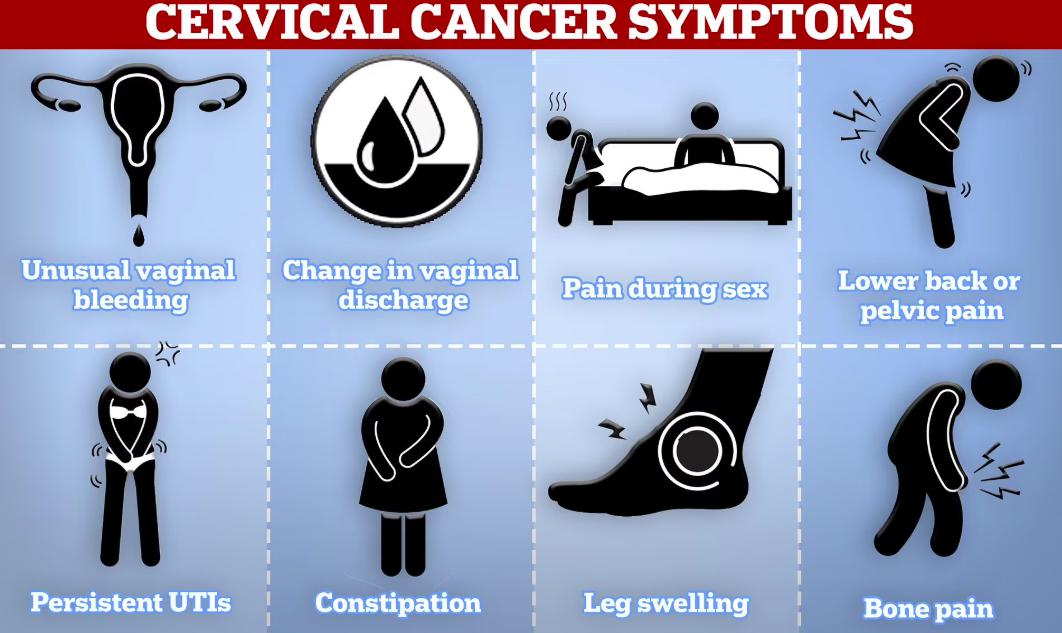Cervical cancer is a serious health condition that develops in the cells of the cervix, often linked to persistent infection with high-risk strains of the human papillomavirus (HPV). While early stages of cervical cancer may not produce noticeable symptoms, as the disease progresses, it can lead to discomfort and complications that affect a patient’s daily life. One of the less commonly discussed but important symptoms is leg pain, which can indicate advanced disease and potential nerve involvement.
For many patients, the question arises: what does leg pain feel like with cervical cancer? Understanding this connection is crucial, as recognizing early warning signs may improve timely diagnosis and treatment outcomes. This article provides a comprehensive look into cervical cancer, its symptoms, especially leg pain, and the available management options, while also offering insights into prevention, prognosis, and patient support.
Definition and Overview
Cervical cancer occurs when abnormal cells in the cervix grow uncontrollably and form tumors. It typically develops slowly over years, beginning with precancerous changes known as cervical intraepithelial neoplasia (CIN). Without early detection through screening methods such as Pap smears or HPV testing, these changes can progress into invasive cancer that spreads to surrounding tissues and beyond.
Types
The two main types of cervical cancer include:
- Squamous Cell Carcinoma – The most common type, originating in the thin, flat cells lining the cervix.
- Adenocarcinoma – Less common, but arising from glandular cells in the cervical canal.
In rare cases, cervical cancer may involve mixed cell types.
Causes and Risk Factors
The leading cause of cervical cancer is persistent HPV infection. Other contributing risk factors include:
- Multiple sexual partners or early sexual activity
- Weakened immune system
- Smoking
- Long-term use of oral contraceptives
- Family history of cervical cancer
- Lack of regular cervical cancer screening
Symptoms and Early Warning Signs
Early cervical cancer often does not cause symptoms. As the condition progresses, patients may experience:
- Abnormal vaginal bleeding (after intercourse, between periods, or after menopause)
- Unusual vaginal discharge
- Pelvic pain or discomfort
- Pain during intercourse
One of the later symptoms is leg pain, which raises the question: what does leg pain feel like with cervical cancer? Typically, this pain is described as persistent, dull, or sharp pain that radiates down the legs, often accompanied by swelling. It occurs because the cancerous growth may press against nerves or block lymphatic drainage, leading to nerve pain or lymphedema.
Diagnosis
Diagnosis usually involves:
- Pap smear and HPV testing for screening
- Colposcopy to closely examine the cervix
- Biopsy for tissue confirmation
- Imaging tests (MRI, CT scan, PET scan) to determine cancer spread and evaluate symptoms such as leg pain
Treatment Options
Treatment depends on the stage of the cancer and the patient’s overall health. Common options include:
- Surgery (hysterectomy or removal of cancerous tissue)
- Radiation therapy
- Chemotherapy
- Targeted therapy or immunotherapy in advanced cases
Management of leg pain may involve pain-relief medications, physical therapy, or treatment of lymphedema if swelling is present.
Prevention and Lifestyle Recommendations
Prevention plays a key role in reducing cervical cancer risk. Important steps include:
- Receiving the HPV vaccine
- Regular cervical cancer screening
- Practicing safe sex and limiting exposure to HPV
- Maintaining a strong immune system through healthy lifestyle habits
- Quitting smoking
Prognosis and Survival Rates
The prognosis of cervical cancer depends on the stage at diagnosis. Early detection offers a high survival rate, while advanced stages with symptoms like leg pain often indicate metastasis or nerve involvement, which may reduce survival chances. However, advancements in treatment continue to improve outcomes.
Latest Research and Innovations
Recent research focuses on HPV vaccines, targeted therapies, and immunotherapy to improve treatment response. Clinical trials are exploring personalized medicine approaches that aim to reduce side effects while increasing effectiveness, even in advanced cases where leg pain and other complications occur.
Coping and Support for Patients
A cervical cancer diagnosis can be emotionally and physically overwhelming. Patients are encouraged to seek support from healthcare providers, counseling services, and support groups. Managing leg pain and other symptoms with proper medical guidance, physical therapy, and emotional support can improve quality of life during treatment and recovery.
Conclusion
Leg pain associated with cervical cancer often signals advanced disease, caused by nerve compression or lymphatic obstruction. Answering the question, what does leg pain feel like with cervical cancer, it is typically described as a persistent, radiating discomfort sometimes accompanied by swelling. Recognizing this symptom, alongside other early warning signs, is critical for timely diagnosis and effective treatment. With prevention strategies like HPV vaccination and regular screening, many cases of cervical cancer can be avoided or treated in their earliest, most manageable stages.
FAQ
1. What does leg pain feel like with cervical cancer?
It is usually a persistent, dull, or sharp pain that radiates down the legs, sometimes with swelling, caused by nerve compression or lymphatic blockage.
2. Does leg pain mean cervical cancer has spread?
Leg pain can indicate advanced disease where the tumor is affecting nearby nerves or lymphatic pathways.
3. Can cervical cancer be detected before symptoms appear?
Yes, regular Pap smears and HPV testing can detect precancerous changes before symptoms develop.
4. How can cervical cancer leg pain be managed?
Treatment may involve pain medications, physical therapy, or treatment of lymphedema, in addition to addressing the cancer itself.
5. Is cervical cancer preventable?
Many cases can be prevented through HPV vaccination, safe sexual practices, and regular screening.

